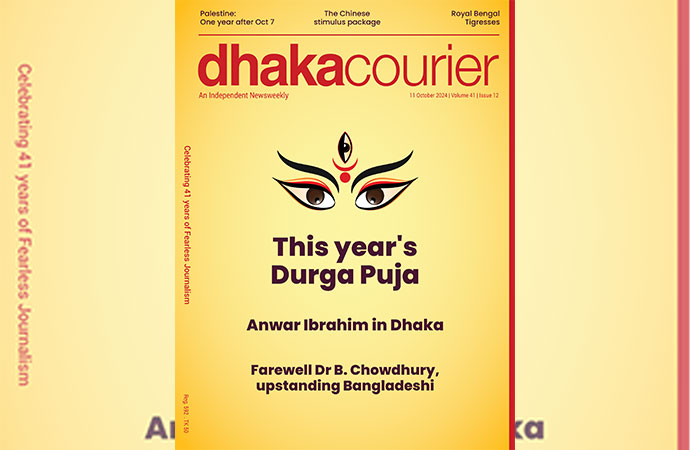Culture

Kibria, a significant name in enriching modernism in Bangladeshi Art, is considered an iconic figure in contemporary art.
He introduced modern paintings where compositions, colours and forms are major features. He meticulously blended the essential elements of paintings.
His paintings can be explained in many ways where one can find the touch of mysticism; some can get the taste of harmony, melancholy or despair. His mode of expression (in paintings) had been changed a number of times, but the painter successfully established his personal trademark through all his creations.
Kibria was born in Birbhum in 1929 and he graduated from the Government School of Art, Calcutta (now Kolkata) in 1950. Kibria started out as a figurative artist in the 1950s.
Kibria moved to Dacca (now Dhaka) in 1951 where he started his career as an art teacher at the Nawabpur High School.
In 1954, he joined as a teacher at the Government College of Arts and Crafts (currently the Faculty of Fine Arts, University of Dhaka). He studied painting and printmaking at Tokyo National University of Fine Arts and Music. During his stay in Japan, he was learning the details of two major genre of printmaking -- lithograph and wood cut.
He also concentrated on the use of space and its varied aspects. The artist meticulously created space that denoted solitude and serenity. His colours seem more subdued and lucid. In the course of time, his works matured further in terms of the inner structure of forms and objects.
Kibria was known for his compositions and he worked in several mediums, applying different techniques. His printmaking was very delicate, prolonged and technique based. Emotions, yearnings, contemplation and liberty were aptly addressed through his etchings and lithographs.
He used minimisation in his printmaking. Due to the influence of his Japanese guru Hideo Hagiwara (in printmaking), Kibria's etchings and lithographs reflect elements of Japanese subtlety and technique.
Kibria had simplified and enhanced the abstract image that constructs a visual reference to his reminiscences, imaginings and thoughts.
His paintings' colours, forms, textures and overall composition truly articulate his visions where quietude, simplicity and subtlety blended collectively.
Dynamically active till the end of his life, the artist's preference for colours, compositions and textural patterns had a significant impact on the Dhaka art scene.
A number of painters have been greatly influenced by Kibria, which could be regarded as "Kibria Schooling".
June 7 marked the 8th death anniversary of Mohammad Kibria.

























Leave a Comment
Recent Posts
In stormy seas, they steadied ...
As the interim government of Nobel Laureate Prof. Muhammad Yunus compl ...
Why the Munia Murder case must ...
It was late in the afternoon of April 26 in 2021, just after 3pm, that ...
Bangladesh and India are preparing for a high-level ..
Dr Yunus sees ill-efforts at home, abroad to make go ..
Desired elections on completion of necessary reforms ..
Pope Francis has called for an investigation to dete ..